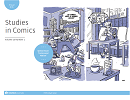
Full text loading...
 , Priyanka Tripathi2
, Priyanka Tripathi2
Within the melange of comics studies, migration studies and autobiography studies, this article investigates the process in which the collective trauma as well as the personal trauma of refugee women has been portrayed through the visual medium in Malini Gupta and Dyuti Mittal’s ‘The Taboo’, Syeda Farhana’s ‘Little Women’ and Maria M. Litwa’s ‘Welcome to Geneva Camp’. These stories focus on the issues faced by women who migrated to Bangladesh from parts of Bengal and Bihar and thereby experienced a crucial, grief stricken life in refugee camps during the Indo–Bangladesh–Pakistan partition. Life in these refugee camps meant not only meagre resources but also a loss of nationality. In the absence of such validation, these migrants faced an extreme sense of identity or existential crisis. The group photographs, family photographs, complex roadmaps and the map of the subcontinent in the aforementioned graphic narratives are merged to serve as the ‘narreme’, the base of narratives. They are organized on the basis of experiences of women from various classes, castes and provinces, contesting with the interminable psychological violence of partition and post-partitioned reality.

Article metrics loading...

Full text loading...
References


Data & Media loading...

Publication Date:
https://doi.org/10.1386/stic_00062_1 Published content will be available immediately after check-out or when it is released in case of a pre-order. Please make sure to be logged in to see all available purchase options.